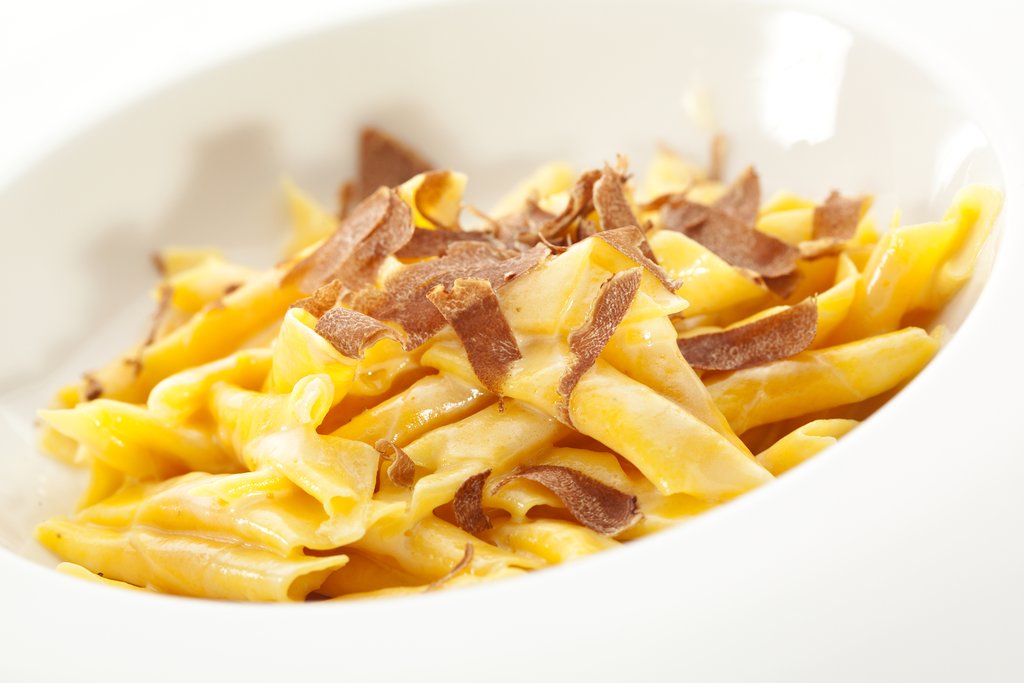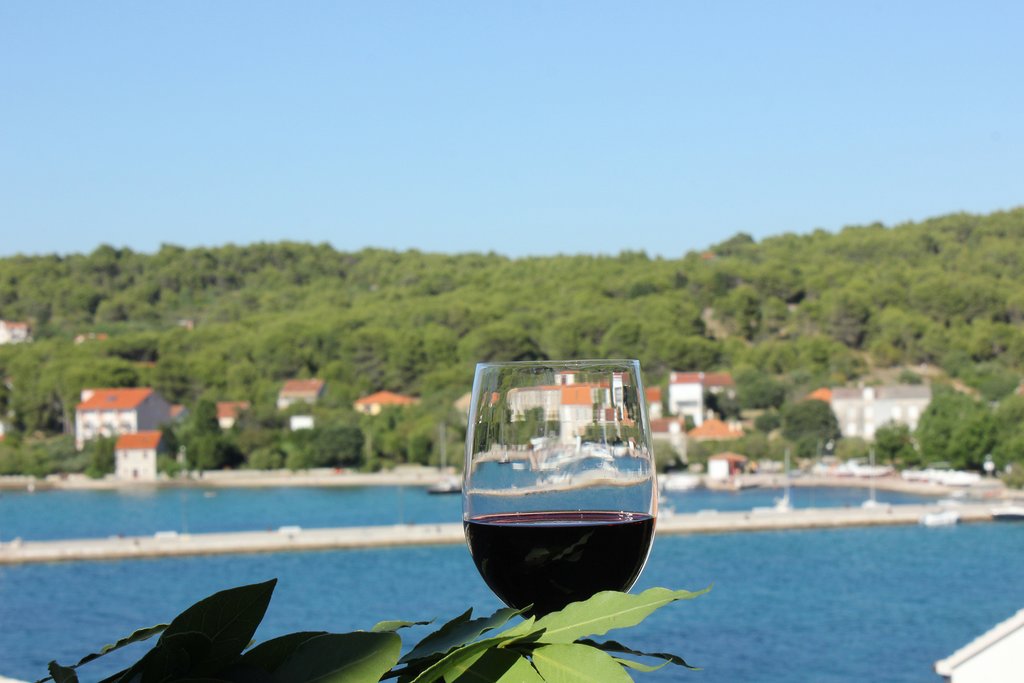Seafood

With more than a thousand miles of mainland coastline and 1,246 islands and islets, Croatia has easy access to the ocean—so it's no surprise that seafood dishes are front and center on menus throughout the country. Whether you're enjoying fine dining with wine pairings and water views or digging into a humble plate of grilled fish at a family-run eatery in the city, it's hard to go wrong when the raw materials are this fresh.
Signature dishes vary by region. In Dubrovnik's Old Harbor, try crni rižot (squid ink risotto), served in little black pots at the dockside tables at Lokanda Peskarija, or buzzara (shellfish sautéed in olive oil, herbs, and white wine). On a day trip to the village of Mali Ston, less than an hour northwest of the capital, feast on mussels and oysters pulled from nearby Malostonski Bay just hours before they land on your plate. On the islands, more culinary adventures await. Try the charcoal-grilled fish while gazing at the secluded bay at Konoba Stončica on Vis Island: getting to the restaurant, which is only accessible by boat or by trekking along a steep path, is part of the fun. On Hvar Island, savor a slow food experience with a bowl of gregada (lobster stew with tomatoes and onions) at Lucullus. And at Kod Ruže in Osijek, try fiš paprika (carp stewed in pepper sauce).
Learn more about Croatia's regions by reading this article.
Ćevapi

Croatians love comfort food, especially during chilly winter. A traditional meat-and-potatoes diet is popular all over the country, but thanks to a regional history marked by foreign invasions and influences, most dishes are far from boring. Ćevapi (or čevapčiči) is a great example: these kebab-like sausages, made with spicy minced beef or pork, are an import from Bosnia and Herzegovina. They're so ubiquitous in Croatia, however, you could easily forget they're from someplace else: the food is as common to locals as hamburgers are to Americans.
The best place to try ćevapi is at a konoba, a traditional Dalmatian restaurant found along the Adriatic coastline. Popular options include Ba!cevapi in Split, Sofra and MS Grill in Zagreb, and Odisej in Pula.
Other comfort foods worth seeking out in the region include peka, a traditional Dalmatian dish consisting of meat and vegetables tossed with olive oil and herbs, then covered with a steel dome and baked inside a fireplace. Elsewhere in Croatia, look for schnitzel (try Baltazar in Zagreb), štrukli (cheese-filled blintzes) in the nearby region of Zagorje, and frkanci, a thick pasta with venison, in Motovun. The cuisine of Gorski Kotar and Lika, centered around boiled potatoes, pickled cabbage, homemade fresh cheese, and smoked meat, is also a great pick for a hearty lunch or dinner.
Discover Croatia's highlights with this 8-day trip plan.
Truffles

A revolving door of foreign domination over three centuries has left the Croatian region of Istria with a distinctive cuisine. In the summertime, fish and shellfish are central to the local diet, but in autumn, it's all about truffles. There are two varieties, black and white: the white truffle grows in Istrian forests from September through January and is often served in fresh shavings over pasta or fish. The black truffle—slightly less expensive than the white version, and with three different varieties indigenous to the region— grows from January through spring.
Classic dishes with truffles to look for in Istria include pasta fuži with white or black truffles (fuži is a pasta shape specific to Istria) at Gostiona Kvarner in Labin, with a sea-facing terrace, or fresh fish with truffles at Sveti Nikola in Poreč. Try the truffle in various delicious forms—steak with grated truffles, chocolate cake with olive oil and truffles, truffle ice cream—at the truffle festival held in Livade every October.
Chat with a local specialist who can help organize your trip.
Paški sir

Croatia's most famous cheese, paški sir, comes from Pag Island. Made with sheep’s milk, it's rich with the taste of salty sea air and scrub herbs ingested by the sheep that graze on the small island's open spaces. It's often served with bread before meals, both in homes and in restaurants.
Learn about how the cheese is made during a hands-on tour of Gligora Dairy on the island, or look for the artisanal brand at shops around the country, including the Old Marketplace Pazar in Split and the Rijeka Market in Rijeka. The coastal city of Zadar, close to Pag island, is another of the best places to sample the cheese. But you'll find paški sir in food shops and restaurants all over Croatia (and abroad: the sharp, salty cheese has devoted fans elsewhere in Europe).
Plan your trip with this guide to the Dalmatian Islands.
Desserts

Croatians have a penchant for sweet treats. Some are influenced by Austro-Hungarian tradition, like palačinke (delicate honey-walnut filled crepes), best served with an espresso at an elegant café like Kavana Waldinger in Osijek. Others have a distinctly Mediterranean character, like arancini (candied orange peel), found all along the southern coast.
Rožata, the Croatian version of flan or crème brulee, is popular in Dubrovnik, which is where the dish originated. The name derives from the rose liqueur that gives the cake its distinctive flavor and aroma. LAJK Restaurant in the old city makes a great version. While in this part of the country, also look for čokoladni tart s ljutom narančom (bitter orange chocolate tart) made with fruit from the orange trees that grow abundantly in the city. And if you make it to Mali Ston, north of Dubrovnik, look for Stonska torta s bademima (almond cake), an unusual cake filled with cooked macaroni pasta, chocolate, and almonds native to the region.
Find out more about the best places to eat in Dubrovnik here.
Wine & Spirits

A glass of wine with a view on Zlarin island, Croatia
Wine production in Croatia dates back to the ancient Greeks, who cultivated grapes on the southern Dalmatian islands thousands of years ago. Today, the country has more than 300 wine-producing areas. Most of the wine made in Croatia is white, though you'll also find red wines produced in coastal areas.
The best places to try wine in Croatia include Istria and the north coast, known for dry white wines like Malvazija and full-bodied red wines like Teran. Close to Momjan, stop into Kozlovic Winery (and stay for lunch with wine pairings at the onsite restaurant), then stop into Kabola Winery, specializing in sparkling wines, or Cuj Winery, where you can try a rare rosé. Inland, head to Slavonia, known for its aromatic Graševina wine, and specifically to the historic vineyards and cellars of Kutjevo, the unofficial capital of Croatian wine.
Other spirits to try in Croatia include artisanal biska in Hum, the smallest town in the world. Biska is a local grape brandy infused with white mistletoe and other herbs: try it with house-smoked meat and sauerkraut at Humska Konoba. In Zadar, watch the sunset with a glass of Maraschino, a local liqueur made from a unique variety of cherries grown in the region.
Use this itinerary to plan a wine and cycling trip to Istria, and check our Croatia FAQ here.
